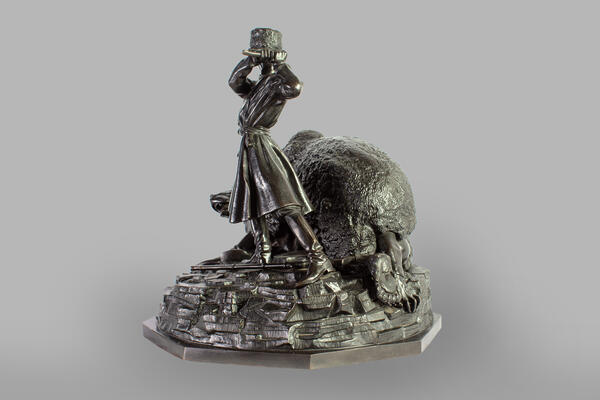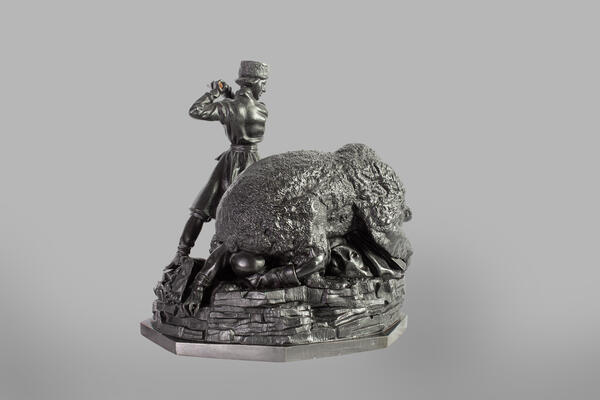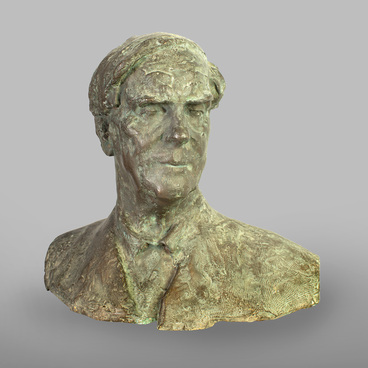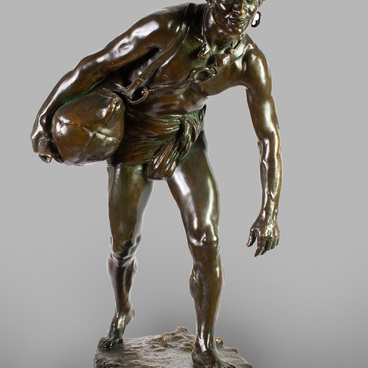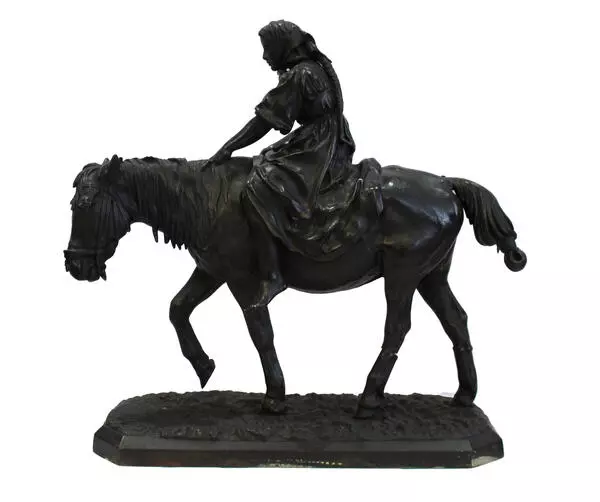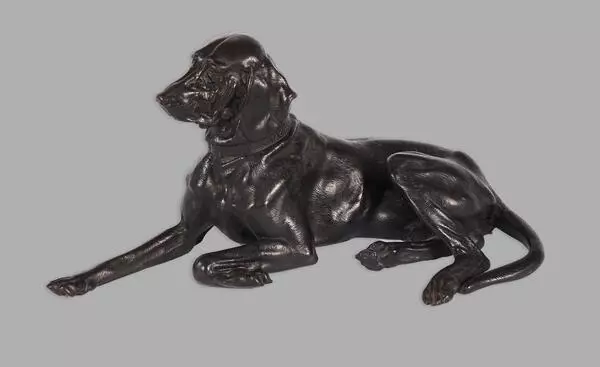The sculptural group “Bear Hunting” was designed by the Russian sculptor Nikolai Ivanovich Lieberich.
Nikolai Lieberich was born in Saint Petersburg in 1828. He was a member of the Imperial Academy of Arts and colonel of the Imperial Guard and dedicated half of his life to military service. In his spare time, he designed clay and wax figures, treating it more like a hobby than a career. After retiring at the age of 29, Lieberich began attending classes at the Academy of Arts. He studied under the guidance of the famous sculptor Pyotr Karlovich Clodt and achieved great success. His bronze sculptures served as models for the works of Kasli craftsmen.
Animalier sculpture that depicted hunting scenes became particularly prominent in Kasli artistic casting. The tradition of portraying Russian emperors hunting developed during the reign of Nicholas I when artists and writers were invited to join royal hunting trips and create a true-to-life account of the emperor’s hunting success and trophies. When Alexander II came to power, bear hunting became especially popular in court circles. Lieberich designed an entire series of works dedicated to this dangerous pastime. One of them is “Bear Hunting” from the collection of the Tambov Regional Art Gallery. In this sculptural group, the artist depicted one of the dramatic moments during the hunt when only the determination and swift reaction of a friend saved the life of a person pressed by a mighty beast.
Lieberich was the first Russian sculptor whose works were widely represented at major exhibitions both in Russia and abroad, including the Imperial Academy of Arts in Saint Petersburg, and International Exhibitions in London, Vienna, and Paris. Lieberich’s sculptures were unique. Having been born with an innate power of observation and having served in the military for a long time, the sculptor was capable of noticing the minute details of hunting scenes, battles, and everyday situations. This sensitivity helped him to design extremely realistic sculptures and achieve an accurate representation of strength, passion, and tension.
Nikolai Lieberich was born in Saint Petersburg in 1828. He was a member of the Imperial Academy of Arts and colonel of the Imperial Guard and dedicated half of his life to military service. In his spare time, he designed clay and wax figures, treating it more like a hobby than a career. After retiring at the age of 29, Lieberich began attending classes at the Academy of Arts. He studied under the guidance of the famous sculptor Pyotr Karlovich Clodt and achieved great success. His bronze sculptures served as models for the works of Kasli craftsmen.
Animalier sculpture that depicted hunting scenes became particularly prominent in Kasli artistic casting. The tradition of portraying Russian emperors hunting developed during the reign of Nicholas I when artists and writers were invited to join royal hunting trips and create a true-to-life account of the emperor’s hunting success and trophies. When Alexander II came to power, bear hunting became especially popular in court circles. Lieberich designed an entire series of works dedicated to this dangerous pastime. One of them is “Bear Hunting” from the collection of the Tambov Regional Art Gallery. In this sculptural group, the artist depicted one of the dramatic moments during the hunt when only the determination and swift reaction of a friend saved the life of a person pressed by a mighty beast.
Lieberich was the first Russian sculptor whose works were widely represented at major exhibitions both in Russia and abroad, including the Imperial Academy of Arts in Saint Petersburg, and International Exhibitions in London, Vienna, and Paris. Lieberich’s sculptures were unique. Having been born with an innate power of observation and having served in the military for a long time, the sculptor was capable of noticing the minute details of hunting scenes, battles, and everyday situations. This sensitivity helped him to design extremely realistic sculptures and achieve an accurate representation of strength, passion, and tension.


